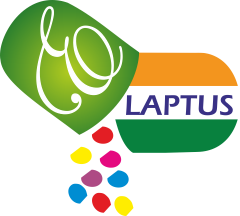1. Introduction: Unlocking Ancient Mysteries – Bridging Past and Present
Ancient civilizations continue to captivate our imagination, offering glimpses into societies that achieved remarkable feats of architecture, art, and spirituality. Their enduring enigmas not only fascinate historians and archaeologists but also inspire modern culture and symbolism. Understanding the symbols and architectural marvels of these civilizations helps us connect with their worldview, beliefs, and technological prowess. From the towering pyramids of Egypt to iconic symbols like the Eye of Horus, this exploration reveals how ancient secrets inform our current understanding of history and spirituality.
Explore the article:
- The Foundations of Ancient Egyptian Civilization
- Deciphering the Mysteries of Egyptian Architecture
- Symbols of Power and Divinity in Ancient Egypt
- The Eye of Horus: From Myth to Modern Symbolism
- Material and Technological Innovations in Ancient Egypt
- Deepening the Mysteries: Unanswered Questions and Ongoing Research
- The Legacy of Ancient Egypt in Modern Times
- Conclusion: From Pyramids to Symbols, Unlocking the Past to Illuminate the Present
2. The Foundations of Ancient Egyptian Civilization
Ancient Egypt emerged around 3100 BCE as one of the world’s earliest complex societies. Its grandeur was rooted in a unique blend of political stability, religious devotion, and technological innovation. The Nile River’s predictable flooding provided fertile land, enabling the development of a centralized state that worshipped divine kingship. The Pharaoh was considered a divine ruler, embodying both political authority and divine power, which reinforced social cohesion and religious authority.
Key achievements include:
- Monumental architecture: such as temples, tombs, and pyramids
- Art and symbolism: richly decorated wall paintings, sculptures, and amulets
- Writing systems: hieroglyphs that combined phonetic and ideographic elements
Religion played a central role, with gods representing natural forces and concepts of afterlife. The divine kingship was reinforced through religious rituals, monumental architecture, and the use of sacred symbols like the Eye of Horus, which represented protection and royal authority.
3. Deciphering the Mysteries of Egyptian Architecture
The construction of the pyramids reflects a sophisticated understanding of engineering and societal organization. The Great Pyramid of Giza, built around 2580–2560 BCE, is a testament to this mastery. It involved the movement and precise placement of approximately 2.3 million stone blocks, some weighing up to 80 tons, showcasing advanced planning, labor organization, and engineering techniques.
The placement and design of pyramids were deeply symbolic. For example, the orientation of the Giza pyramids aligns with cardinal points, and their positioning reflects religious principles connected to the sun and stars. Their scale and alignment served to reinforce the divine status of the pharaohs and their journey to the afterlife.
| Feature | Details |
|---|---|
| Stone Blocks | Approximately 2.3 million, some weighing up to 80 tons |
| Construction Time | Estimated 20 years for the Great Pyramid |
| Alignment | Cardinal points, aligned with stars and the sun |
4. Symbols of Power and Divinity in Ancient Egypt
The Pharaoh was regarded as the living embodiment of Horus, the sky god and protector of the ruler. This divine association was reinforced through art, regalia, and symbols that communicated divine authority. The intertwining of religion and rulership created a cohesive cultural identity centered around divine legitimacy.
Symbols like the Eye of Horus encapsulate core concepts of protection, royal power, and health. Worn as amulets, such symbols were believed to safeguard the wearer against evil and to promote healing, illustrating the profound spiritual significance of iconography in everyday life.
The Eye of Horus, in particular, became a universal emblem of protection and divine watchfulness, extending its influence beyond Egypt into modern symbolic usage.
5. The Eye of Horus: From Myth to Modern Symbolism
Originating from Egyptian mythology, the Eye of Horus is linked to the myth of Horus losing his eye in a conflict with Seth, which was later restored by the gods. This myth underscores themes of restoration, healing, and protection.
Symbolically, the Eye of Horus represents protection, health, and royal authority. It was widely used in amulets, jewelry, and ritual objects to invoke divine safeguarding. The motif’s influence persists today, appearing in logos, tattoos, and spiritual practices.
For those interested in the symbolic and cultural significance of the Eye of Horus, exploring various artifacts reveals its pervasive role in ancient life. Interestingly, the symbolism has even found its way into contemporary gaming and entertainment, where it is often associated with mystique and protection. To see how ancient symbols are integrated into modern contexts, you might explore Egyptian slot game rules.
6. Material and Technological Innovations in Ancient Egypt
Ancient Egyptians were pioneers in material science, exemplified by the creation of Egyptian blue, one of the first synthetic pigments. This vibrant blue pigment, made from calcium copper silicate, was used in frescoes, jewelry, and statues, reflecting sophisticated chemistry skills.
Technological advances extended to architecture—such as the development of corbel vaults and precise stone-cutting techniques—and daily life, including irrigation and medicine. These innovations highlight a society with a deep understanding of natural materials and engineering principles, many of which remain influential in modern engineering and art conservation.
The integration of science and art in ancient Egypt exemplifies their advanced knowledge, which was crucial for constructing enduring monuments and developing durable artifacts.
7. Deepening the Mysteries: Unanswered Questions and Ongoing Research
Despite extensive research, many aspects of Egyptian engineering and symbolism remain partially understood. For instance, how exactly the pyramids were built with such precision and scale continues to inspire debate. Theories suggest the use of straight or spiral ramps, but definitive evidence remains elusive.
Similarly, the precise ritual significance and use of the Eye of Horus in religious ceremonies are still being studied. Researchers employ advanced technologies like 3D scanning, chemical analysis, and interdisciplinary collaboration to uncover new clues.
Emerging tools such as ground-penetrating radar and AI-driven data analysis are revolutionizing archaeological exploration, promising new insights into ancient mysteries.
8. The Legacy of Ancient Egypt in Modern Times
Ancient Egyptian symbols like the Eye of Horus have transcended millennia, influencing contemporary spirituality, art, and design. Its image appears in jewelry, tattoos, and spiritual practices as a talisman of protection and insight.
Studying Egyptian architecture and symbolism offers valuable educational insights into engineering, religious thought, and cultural continuity. Preserving artifacts and promoting research are vital for unlocking future mysteries and understanding human history more deeply.
The enduring fascination with Egypt’s ancient symbols underscores their relevance today, serving as bridges between historical knowledge and modern imagination.
9. Conclusion: From Pyramids to Symbols, Unlocking the Past to Illuminate the Present
The interconnectedness of architecture, symbolism, and technological innovation in ancient Egypt reflects a civilization that masterfully combined spiritual beliefs with scientific achievement. Their mysteries continue to inspire exploration, whether through archaeological excavations or cultural symbolism like the Eye of Horus.
“Understanding ancient symbols enriches our connection with the past and guides us toward future discoveries.”
By studying these timeless principles, we not only appreciate the ingenuity of ancient civilizations but also recognize their lasting influence on modern society. Continued exploration and preservation of artifacts are essential to unlocking new secrets and deepening our appreciation of human history.


